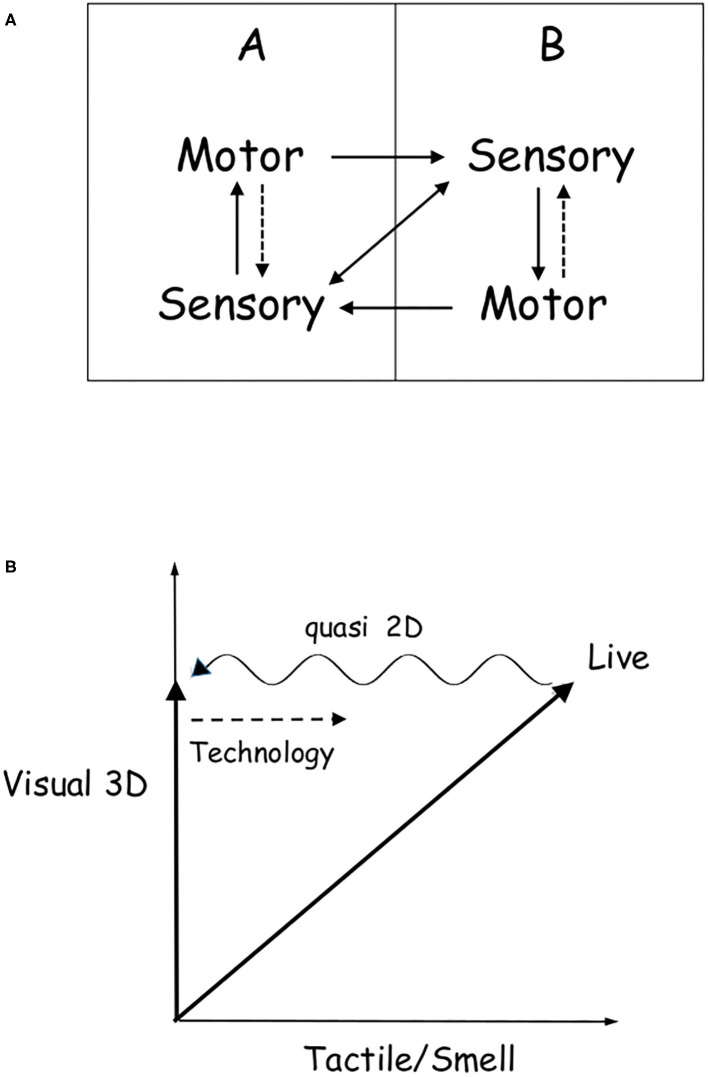Figure 1.
(A) Simple scheme of a live interaction between individuals A and B. The two horizontal arrows indicate the mutual feedback between A and B, while the vertical ones denote the individual internal information exchanges between the sensory and motor systems. The vertical motor-to-sensory dashed arrows indicate the increased strength of sensory-to-motor (continuous arrows) when an individual interacts, thus, triggering the clockwise feedback loop, which represents the emergence of self-organizing behavior of A–B as a whole. The double diagonal arrow represents the direct interaction through the sensory system, e.g., eye contact or touch. (B) Qualitative sketch of the passage from live to online interactions. Live interactions involve both visual and tactile/smell senses, while online determines a reduced perception, represented in the figure as a shift toward the quasi 2D vision. The wave in the left arrow denotes that the projection on the vision axis is neither two- nor three-dimensional, but in between. The right dashed arrow represents technologies needed to (partially) fill the online–live interactivity gap. Being almost unchanged, auditory is not reported.

